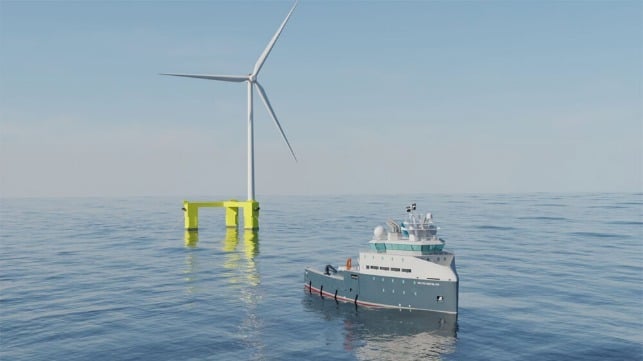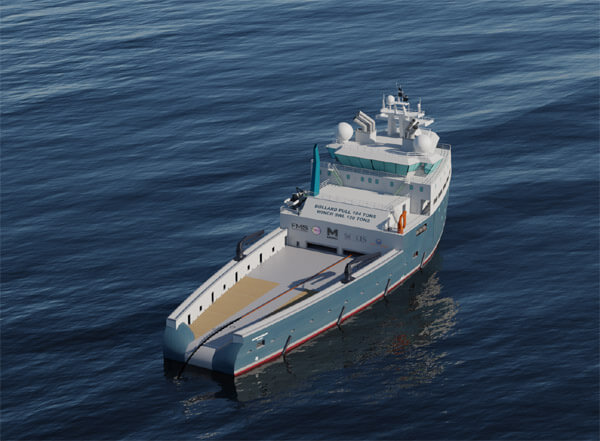Vessel Concept Meets Challenges of Floating Wind Turbine Installation

A consortium based in the UK is working on the designs for a new segment of the shipping industry specifically designed to support floating offshore wind installations. As the offshore wind energy industry moves toward its next phase, which will require floating turbines, it will also need a new type of vessel better suited to the challenges of positioning and anchoring turbines.
“At present, the global fleet falls far short of what is required for serialized installation of floating turbines and their infrastructure,” explains Ian Godfrey of Tope Ocean, an engineering firm involved in the project.
The vessel concept focuses on a section of the floating wind installation process that is yet to be optimized. According to the project partners, the vessel will work with any of the three main anchor types for floating wind turbines being considered by the industry. Drag embedment anchors, they highlight will require installation by high bollard pull anchor handling vessels, while suction piles and driven piles, which require large subsea cranes to install them into the seabed.
The first feasibility stage has been completed for the Future FLOW Installation Vessel. It will meet the requirements of the next phase by installing the mooring lines onto the installed anchors, enabling quick connection to floating foundations towed to the offshore site. The design also incorporates low-carbon fuels, providing fuel efficiency advantages, a hydrodynamically optimized hull, and expanded mooring capacity.
“We’ve reimagined the mooring installation process, designing a vessel focused on these new requirements,” says Simon Hindley of Solis Marine Engineering. “By combining an energy-efficient hull form with a low-emission powertrain, we can tackle high-duty construction tasks without relying on traditional, fossil fuel-powered vessels, improving the overall efficiency of the offshore construction activities.”

The vessel has been designed to maximize mooring line capacity while minimizing running costs. The selection of azimuth thrusters and reduced resistance to station-keeping and dynamic positioning efficiency is partnered with the alternative fuel choice of methanol. To maximize mooring line capacity, the vessel also has a large below-deck cable tank for synthetic mooring ropes as well as large chain lockers to hold the kilometers of chain expected for the floating wind industry.
The project is part of the Clean Maritime Demonstration Competition Round 4 (CMDC4), funded by the UK Department for Transport and delivered by Innovate UK. Consortium partners include naval architects Solis Marine Engineering, innovation specialists Tope Ocean, marine operations specialists First Marine Solutions, and Celtic Sea Power.
The consortium reports it is now advancing toward the next design stage, which will focus on the equipment for handling large quantities of synthetic ropes, weather-limit analyses, and regulatory and design challenges faced by methanol propulsion systems. The target is to secure an Approval in Principle from a major ship classification society by December 2025.
